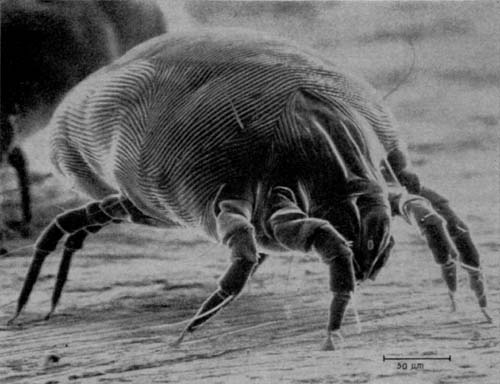
Image Credit: Wikipedia
Each word in the phrase “integrated pest management” (IPM) is important. It means a thoughtful, systems-approach to mediate contact between people and unwanted critters—bugs, usually, but sometimes small mammals as well. We call them pests, but we really don’t care if they do their job within an ecosystem; we just don’t want them in our homes or on us.
IPM during construction
For the most part, if you are managing moisture and air, you are either taking away a critical essential for many pests (water) or blocking their entry (air sealing). Nice to be able to think of your flashing and air sealing details as environmentally-preferable pest management, right?
Two of the most common pests that can be managed during construction are termites and carpenter ants. They both need moisture, so keeping things dry is key. For termites, physical barriers are effective (https://www.greenbuildingadvisor.com/product-guide/prod/termimesh-system). And there are bait-driven management systems (https://www.greenbuildingadvisor.com/product-guide/prod/sentricon-termite-colony-elimination-system) that are easier on the environment but tough on the termites.
IPM during gut rehab or unit turnover
As with new construction, managing moisture and air is the place to start once you begin work on the existing home. But before you start, add pest inspection to your building audit for the appropriate critters in your neck of the woods.
But what about contents of the home; how do you know what to salvage for reuse and what should be tossed for fear of spreading pests? In most cases, clean and dry materials given a thorough visual overall inspection are a safe salvage bet. And for many of the insect pests that are hard to see, exposure to direct sunlight, elevated temperatures for 12 hours, or exposure to sub-freezing temperatures for two or more days represent safe and effective management. And most building materials or used furniture stores have their own requirements before accepting materials; always call ahead to see what they will and will not take into their stock.
IPM for occupants
Every homeowner needs to know about household pests that have nothing to do with your work: dust mites, fleas, bed bugs, etc. You can score some points with your homeowners/clients by adding key information resources about these common pests into your homeowner manual. And that brings us to Mike Potter and Bill Quarles.
Mike Potter and Bill Quarles
A big part of my job as a researcher-building scientist is to not necessarily know everything about buildings, but sometimes just to know the leading expert available and direct folks his or her way. That is certainly the case for IPM and Mike Potter and Bill Quarles. Whenever I have a question about bugs and their management I go here:
University of Kentucky Cooperative Extension Entfacts
or here:
You just can’t get better straightforward information on all aspects of household pests and their management than from Mike and Bill, period.
Weekly Newsletter
Get building science and energy efficiency advice, plus special offers, in your inbox.











0 Comments
Log in or create an account to post a comment.
Sign up Log in